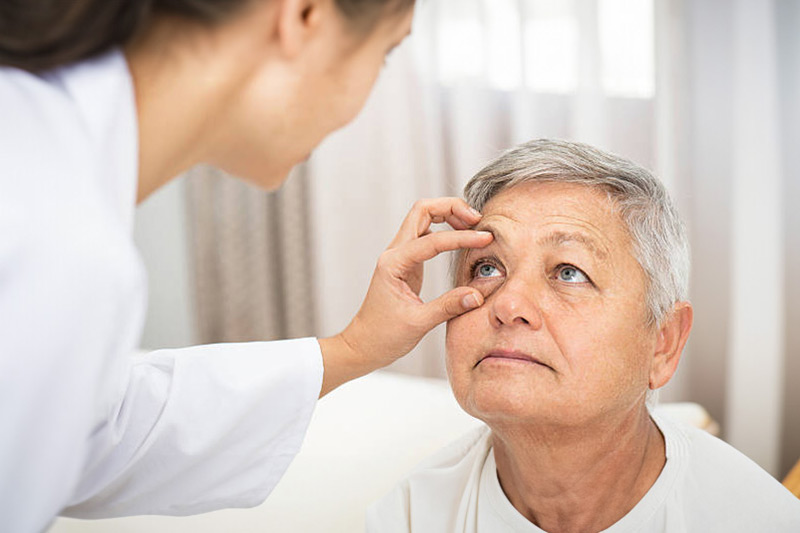Satellite Office
4660 Kenmore Avenue, Suite 416Alexandria, VA 22304
703-620-4300

Skin cancer is a widely acknowledged health risk, particularly for individuals with fair skin or those who spend extended periods of time in the sun. An often-overlooked hotspot for the development of skin cancer is the eyelid. Given its delicate skin and a lifetime exposure to ultraviolet rays, the eyelid is susceptible to various forms of skin cancer. Let’s delve into the important details about eyelid skin cancer.
Basal cell carcinoma (BCC) is the most common skin cancer to affect the eyelid and is felt to be caused from ultraviolet damage to the skin. BCC grows slowly but can cause substantial local invasion if not treated early. Squamous cell carcinoma is a more aggressive type of skin cancer and is also associated with chronic ultraviolet damage to the skin. Sebaceous carcinoma originates in the oil glands and can grow undetected until it is substantial in size. Melanoma is a more dangerous form of eyelid cancer, but is fortunately very rare. Therefore, it is essential to detect all of these forms of cancer in the early stages.
Risk factors for eyelid cancer include advanced age, fair skin, light-colored eyes, chronic exposure to sunlight, a history of sunburns, genetic skin disorders, and a weakened immune system.
The dangers of eyelid skin cancer go beyond mere physical disfigurement. If the cancer metastasizes, it can lead to more severe health issues, including, in extreme cases, death.
The skin on the eyelids is thin and sensitive, making it susceptible to rapid cancer growth. Because the symptoms can be subtle, early detection becomes imperative. An ignored lump or bump on your eyelid could escalate into a severe problem. Worrisome features include: a slowly growing painless lesion, changes in the size or color of an existing mole or growth, ulceration of the eyelid skin, intermittent bleeding or crusting, change in the normal eyelid architecture (such as loss of eyelashes or destruction of the eyelid margin), a pearly translucent growth, telangiectasias (blood vessel enlargement), or irregular pigmentary skin changes, can all represent signs of eyelid malignancy. As such, regular check-ups with a dermatologist or eyelid cancer specialist (oculoplastic surgeon) are vital for timely diagnosis and treatment.
Treatment for eyelid cancer may include surgery to remove the cancerous tissue, radiation therapy, and in some cases, chemotherapy. The choice of treatment depends on the type and stage of cancer, age of the individual, and the patient’s overall health.
While eyelid skin cancer may not be the most talked-about form of skin cancer, its repercussions are real. Understanding the risk factors and symptoms can save your vision and, potentially, your life.